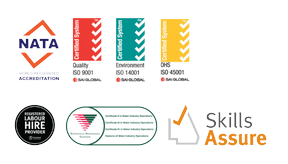Types of Effluent Disposal: Irrigation System Comparison
In a previous article we had a brief overview of different irrigation systems. This article will provide some additional depth by focusing solely on surface (spray) irrigation, and subsurface irrigation and offering a comparison.
The two systems are commonly used in residential applications for lawn and garden maintenance. They are also suitable on a large, industrial scale – agriculture is a good example.
This article discusses the two irrigation methods in the context of wastewater disposal. Without considering the finer details of the two systems, it might seem like there’s no obvious reason to consider one over the other. In reality the decision to implement one system over the other can be crucial to the success of your operations.
Spray irrigation
Spray irrigation is a common method of effluent disposal consisting of irrigation mains and laterals (which are installed below surface), risers, and sprinkler heads. The risers typically sit vertically at a height of roughly one metre on a large irrigation area. Water is pumped through the main lines, distributing out to the lateral lines, and is then lifted up the laterals to sprinkler heads.
The sprinkler head is typically a wobbler style head, which distributes large droplets of water to minimise evaporation or misting. A wobbler head can throw at diameters beyond 10 metres, evenly dispersing water over a large coverage area. The sprinkler heads are spaced to allow for slight overlap of sprayed areas (in order to wet the entire irrigation area with a circular spray pattern).

Spray Irrigation: Courtesy of Woodward/Penn State

Drip irrigation prior to grassing. Photo credit to Rainbird.com
What are the differences?
The systems differ in range of aspects. Depending on your operations and site, the following aspects of the irrigation system may be considered:
- Environmental and health risks
- Water efficiency
- Setback distances
- Installation and maintenance
- Irrigation area shape and slope
- Visual amenity
Environmental and health risks should be considered for all irrigation installations, particularly with wastewater disposal.
A spray irrigation system will disperse effluent through the air, leading to the risk of pathogens becoming airborne. The system can also increase the risk of surface runoff if controls are not established, e.g. flow meters and timers. In addition, plant disease has been observed in some applications due to pollutants remaining on the vegetation itself after the water is evaporated.
In comparison, a subsurface irrigation system can negate the above risks – which could be the key difference for your operations (particularly if the irrigation occurs near public walkways).
Subsurface irrigation also provides significant water savings (water efficiency) compared to a surface system. Evaporation and wind drift are irrelevant for subsurface disposal, and ensure that maximum water is delivered to the soil and vegetation.
If you’re short on space, setback distances and the shapes of available irrigation areas might be the key consideration. Setback distances are minimal with subsurface systems due to their reduced environmental and health risks, meaning that a good portion of the available space can actually be used. Drip lines can be installed to accommodate irregular or sloped irrigation areas, which is difficult to achieve with spray systems due to their circular coverage.
In particular cases, visual amenity of the irrigation area is important. Some operators might prefer that the physical spraying of water is not seen at all, and hence opt for a subsurface system.
So far, the above discussion is heavily favouring subsurface irrigation. However, the advantages are sometimes outweighed by additional maintenance requirements.
When a spray system has a fault in the pipework or sprinkler head, it’s usually easy to spot from the spray itself (not achieving the same throw due to pressure loss, or uneven coverage from clogs). In a subsurface system, faults are not easily identified, and are usually noticed from damp soil on the surface. Clogging can occur easily without proper filtration of the effluent. On top of that, rodents are capable of damaging the lines (which are comparatively small at 10 – 20 mm).
To conclude, the choice between spray and subsurface irrigation depends on your individual site conditions and needs. A subsurface system provides many great advantages, at a potentially greater cost and upkeep.
For simple applications, spray irrigation might be the suitable choice in the long run.


